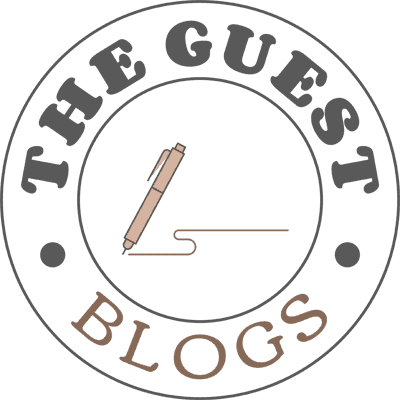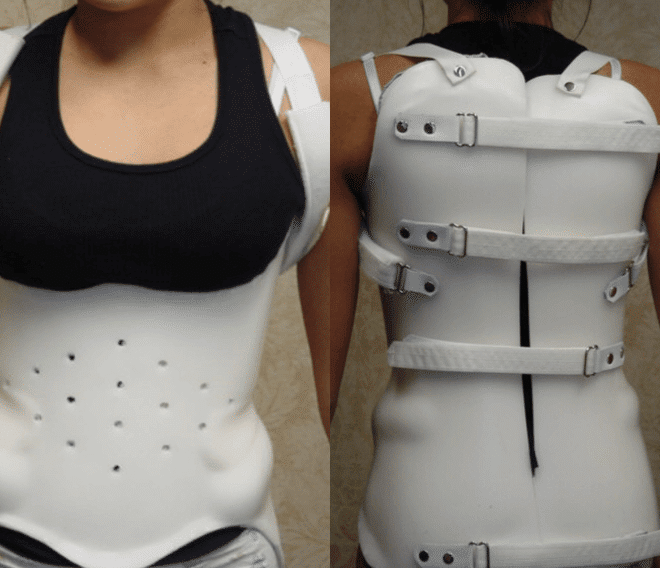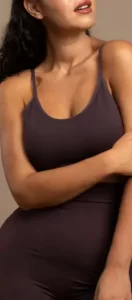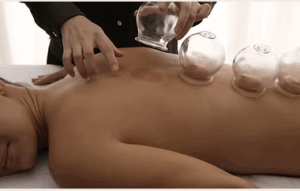If you or someone you care about is dealing with the difficulties of scoliosis, you realize how critical it is to discover appropriate treatment options for this common spine ailment. It can cause discomfort, suffering, and in extreme cases, even problems in lung and heart function. Despite the complexity of scoliosis, there is hope and a plethora of treatment choices to consider. The use of specialized back braces is one of the most common and non-invasive methods of treating scoliosis. These braces are intended to give the afflicted portion of the spine with necessary support, stability, and corrective pressure.
These custom-made back braces are essential in the treatment of scoliosis, giving support, stability, and corrective pressure to the afflicted portion of the spine. The primary goal is to slow or stop the advancement of the curvature while also relieving discomfort and suffering, allowing people with scoliosis to keep an active lifestyle and enhance their overall well-being. The key to success, however, is in selecting the ideal back brace for Scoliosis, which is suited to the exact demands and degree of the curvature. As a result, seeking the advice of a trained healthcare expert, such as an orthopedic specialist or physical therapist, becomes critical. Their knowledge will permit a personalised examination, directing clients to the most appropriate sort of brace.
Back Brace for Scoliosis: A Non-Invasive Approach to Curvature Correction
In people with scoliosis, a back brace is a specialized external orthotic device designed to correct the curvature of the spine and offer vital support to the spine. This novel medical device provides a non-invasive way to managing scoliosis, particularly in teenagers undergoing fast skeletal development. The primary purpose of a scoliosis back brace is to halt the advancement of the spine curvature during critical growing years, hence avoiding the necessity for surgical intervention as the only feasible alternative. The brace helps to realign and maintain spinal alignment closer to its natural position by delivering regulated pressure to the afflicted parts of the spine.
To ensure optimal efficiency and comfort while being worn, these braces are created specifically for each patient’s individual anatomy. Patients may be required to wear the brace for many hours each day, often into their adolescence, depending on the severity of the problem. The back brace not only prevents future curvature advancement, but it also relieves pain and suffering caused by scoliosis. Furthermore, it enables people to engage in regular tasks and physical workouts with greater confidence. While the brace cannot cure scoliosis, it is an important tool in controlling and lowering the impact of the curvature, improving the overall quality of life for persons diagnosed with this illness.
Innovative Approaches: Types of Back Braces for Scoliosis
To control scoliosis, many back braces are used, each with its own design and functionality to meet the demands of the individual:
Thoracolumbosacral Orthosis– This brace is commonly used to treat idiopathic scoliosis and includes the thoracic, lumbar, and sacral areas. It is popular among teens since it is made of tough plastic and stays undetectable beneath clothing.
The Boston Brace: The Boston brace is a custom-built TLSO brace constructed from a plaster mould that applies three-point pressure to spinal curvature to encourage appropriate alignment.
Charleston Bending Brace: Worn just at night, this brace exerts correction pressures to the spine, gradually reducing curvature over time. It is a more adaptable choice than full-time TLSO braces.
Milwaukee Brace: The Milwaukee brace is a full-torso orthosis that extends from the pelvis to the neck and is frequently recommended for those who have a significant thoracic curvature.
SpineCor Brace: This brace stands out for its dynamic design and uses elastic bands to encourage movement and flexibility while yet offering corrective support.
Tailored Solutions: Approaches to Scoliosis Management
Scoliosis management is a multifaceted approach that considers numerous essential parameters, including age, curvature severity, and the risk of development.
Observation: A term of observation is frequently advised for patients with moderate scoliosis and continued development. Regular check-ups allow medical personnel to track the development of the spine curvature throughout this time. There may not be a need for urgent bracing or intervention if the curvature is moderate and does not get worse.
Bracing: When a patient has mild scoliosis curvature (between 25 and 45 degrees) and is still developing, bracing is frequently advised. Bracing’s main goal is to stop the curvature from getting worse and maybe eliminate the need for surgical correction. There are several types of braces available, and the choice is made to fit each specific situation.
Surgery: If the curvature of a severe instance of scoliosis reaches 45 degrees and progresses despite bracing, surgery may be necessary. Spinal fusion, which joins vertebrae to stabilize the spine and reduce curvature, is the most common surgical treatment for scoliosis.
The Importance of Choosing the Right Back Brace for Effective Scoliosis Management
The right back brace selection is essential to the management of scoliosis. Particularly for young kids who may wear the brace for prolonged amounts of time each day, comfort and support are crucial. Selecting the appropriate brace involves taking into account a number of factors:
- An orthopedic professional should be consulted to determine the best form of brace based on the precise type and location of the scoliosis curvature.
- Back braces are made of a variety of materials, including elastic bands, supple textiles, and stiff polymers. Each serves a particular purpose, such as providing durability, breathability, and lifestyle compatibility.
- A properly fitting brace is essential for effectiveness and comfort, making bespoke alternatives the best choice for a unique fit.
- There are numerous braces made for varying degrees of scoliosis, and the level of corrective pressure needed depends on how severe the curvature is.
- It’s critical to comprehend the suggested wear time to guarantee constant commitment to the treatment strategy.
- Consult with scoliosis treatment experts with plenty of experience to get accurate evaluations and suggestions for the best brace.
Where to look for getting the best Back Brace for Scoliosis?
To get the greatest results suited to each patient’s specific needs and daily activities when navigating the realm of scoliosis care, choosing the finest back brace is essential. Life Force Hub is one trustworthy choice to take into account. This knowledgeable group has a track record of providing efficient scoliosis therapy, including properly fitted back braces that put comfort and ideal spinal support first. As a trustworthy source for scoliosis sufferers looking for individualized treatment and attention, they stand out as the best. They provide a thorough approach with their knowledge in scoliosis care, taking into account things like the type and degree of the curvature, the patient’s age, and lifestyle.
By encouraging good spinal alignment and perhaps slowing the evolution of the curvature, the suitable back brace can significantly improve scoliosis care. Fit and comfort are important factors that motivate patients, particularly teenagers, to regularly follow the recommended wear time. Scoliosis patients may acquire the best back braces and enhance their quality of life by seeking expert advice from knowledgeable groups. This will also help them better manage their condition. A productive path towards controlling scoliosis may be made more pleasant and supported by an investment in the correct back brace.
Conclusion
Back braces are a non-invasive and efficient way to treat scoliosis and straighten spine curvature, especially in developing teenagers. These specialized orthotic devices offer vital support and aid in maintaining spinal alignment near to its normal position. They are made to match each patient’s individual anatomy. Back braces may be able to eliminate the necessity for surgical intervention as the sole feasible alternative by stopping additional curvature advancement during critical growing years. Back braces come in a variety of designs to suit different demands, from stiff TLSO braces to more flexible choices like the Charleston Bending Brace and the dynamic SpineCor Brace. The choice of the right back braces crucial for successful scoliosis management and depends on factors such as the type and severity of the curvature, patient age, lifestyle, and comfort.
Visit Also:- https://theguestblogs.com/







Dear Website Owner,
I hope this email finds you well. I recently discovered your website and was impressed by the quality of your content and the helpful information you offer to your audience. In light of this, I would like to propose a backlink exchange that could benefit both our websites.
My website, https://m.cheapestdigitalbooks.com/, is focused on providing affordable digital books to readers around the world. We currently have a strong online presence with a Domain Authority (DA) of 13, a Page Authority (PA) of 52, and a Domain Rating (DR) of 78. Our website features 252K backlinks, with 95% of them being dofollow, and has established connections with 5.3K linking websites, with 23% of these being dofollow links.
I believe that a mutually beneficial backlink exchange could be of great value for both of our websites, as it may lead to an increase in website authority and improve our search engine rankings. In this collaboration, I am willing to add backlinks from my website using your desired keywords and anchor texts. In return, I would be grateful if you could include backlinks with my desired keywords and anchor texts on your website.
I kindly request that you visit my website, https://m.cheapestdigitalbooks.com/, to get a sense of the potential benefits this partnership could bring to your site. I am confident that this collaboration will provide a win-win situation for both parties, and I look forward to learning more about your thoughts on this proposal.
Thank you for considering my offer. I am excited about the potential growth this partnership may bring to our websites and am eager to discuss the details further. Please do not hesitate to reach out to me at your convenience.
Best regards,
David E. Smith
Email: [email protected]
Address: 3367 Hood Avenue, San Diego, CA 92117